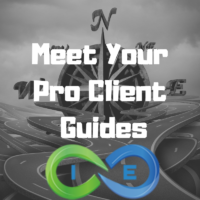At insuranceandestates.com, we define business planning as the part of the estate planning process that is focused on the ongoing operation and prosperity of a business or company. This can be a small family business or a larger more established company because the issues faced by a business don’t change much regardless of the size of the company.
The issues that are within the scope of business planning can be summarized as business succession and continuity planning, business asset protection, planning for key persons AND implementing life insurance strategies for key people such as executive bonus plans, deferred compensation plans or split dollar plans.
This article will serve as an overview of these various aspects of business planning and the most effective strategies for utilizing life insurance to accomplish key business planning objectives.
Effective Business Succession and Continuity Planning using Top Life Insurance Strategies
Effective Business Planning is Concerned With Supporting the Growth and Ongoing Operation of a Business and Equipping the Business to Withstand Difficult Circumstances.
Simply put, all business’s need capital AND great teams and must manage expenses to continue to be successful. When any of these forces is impacted by unforeseen events, the results can be catastrophic.
For this reason, in today’s complex business climate, concerns ranging from estate taxes to excessive regulations can threaten the ongoing operation of any business.
Throw in a life event such as the untimely death or disability of a key business contributor, and you have a potential business catastrophe in the making. This potential and proactively addressing the risk is the impetus for business planning in order to build a hedge against unforeseen problems that can derail the business.
The First Step to Effective Business Planning Should Always Be Whether There Is A Solid Legal Strategy In Place and Then The Question Becomes Whether Life Insurance Can Be Strategically Used To Provide the Company More Security For the Future.
An effective business planning strategy should always consider business succession and decide who will step in or what will otherwise happen if a business owner or key contributor dies or becomes disabled.
Business Succession Planning
As discussed in our article on family business succession planning, it is critically important to identify those with the leadership ability and desire to step in and operate the business if it becomes necessary due to the death or disability of a key person. If no such person can be identified, another strategy such as the sale of the company should be decided in advance.
Regardless of the strategy adopted, whenever a business owner is being replaced, this process should be clearly spelled out in a well prepared buy sell agreement. This buy sell agreement should include a formula for valuing the company in the event of a buyout and should also specify how the purchase should be funded.
Often times, life insurance purchased on key business owners or employees may be utilized for this purpose. To avoid conflicts and create a smooth process, the buy sell agreement should also specify whether anyone has a choice in the buyout and this particularly applies to the deceased owner’s estate.
If a key employee or family member has been designated to step into the shoes of the deceased or disabled person, a buy sell should identify this person and whether he or she will be assigned any ownership interest in the business.
Of course the buy sell agreement is one key legal document that should be integrated with the business owner’s other corporate documents AND estate planning documents. In this way, the business owner and the company can fall back on a reliable business succession plan which fosters a smooth transition that keeps the company operating successfully through the worst of times.
Another aspect of business planning that may NOT involve the replacement of a business owner OR a transfer of business ownership AND concerns the replacement of a key person or employee in the event of death or disability.
Replacing Key Business Persons
A well planned strategy for replacing a key employee should be included in the compensation package. The business needs to decide whether it is wise to purchase life insurance, possibly for the dual purpose of protecting the company against the loss of key employee AND protecting the key employee’s loved ones in the event of death and/or disability.
There are number of advanced life insurance strategies for accomplishing either or both of the above objectives of protecting the business from the loss or disability of a business owner OR key employee AND the best option will depend upon the specific goals of the business, business owner, employee OR all of the above.
Business Succession Planning Using Life Insurance
Purchasing life insurance for business succession planning is usually done in connection with the buy sell agreement AND should be closely connected with the formula that we discussed for valuing the company that should be spelled out in the buy sell agreement. This type of life insurance should reflect the respective business ownership value and for this reason it should be updated at regular intervals as the company’s value increases.
Upon the death or disability of a business owner, the benefits from the policy can be paid to the employee (disability) or the estate of the business owner (death) in order to relieve the business owner or estate from further responsibilities and protect the continuity of the company.
Many company’s offer life insurance living benefit riders that allow an acceleration of the policy’s death benefit in the form of cash indemnity. The owner insured can request payments or a lump sum for qualifying chronic illnesses.
Premium Finance
In many cases the business owner or business has money tied up in various assets. Rather than liquidate those assets, premium financing for life insurance can be used to retain capital and increase cash flow.
Key Person Insurance
In contrast to life insurance for business succession planning, which is for the purpose of funding a buyout, key person insurance (a.k.a. keyman insurance) is about protecting the company from the untimely loss of a key employee. The costs that a company can incur upon the loss of a key employee are significant and range from the expense of hiring and training a replacement to the loss of sales connected to the loss of a key sales person.
Often key sales people or those with specialized skills such as engineers are likely to involve substantial replacement costs and thus warrant key person insurance protection.
Key person insurance can also be used in a such a way as to provide value and incentives to key employees, as we will discuss concerning the following strategies.
Business Continuity Planning
Executive Bonus Plans
The simplest way to use life insurance to provide incentives to key employees through life insurance is to create an executive bonus plan (a.k.a. IRS Section 162 Plan). This simple approach provides that the employer pays the premiums for the policy and includes them as part of the employees taxable income. The employee owns the policy and may also designate the beneficiaries of the insurance policy upon the employee’s death.
When permanent cash value life insurance is used for an executive bonus plan, as opposed to term life insurance, the accruing cash value of the policy can offer an additional incentive to the employee (know the difference between term life vs whole life). By contract, the employees access to the cash value can be restricted to a future date such retirement or after a set amount of time as an employee. This future access to the cash value can act as “golden handcuffs” to provide additional security to the employer.
Deferred Compensation Plans
Another way to use life insurance to reward key employees is to create a deferred compensation plan that can be funded by cash value life insurance. By definition, a deferred compensation plan may be tax “qualified” or “unqualified” depending upon whether the benefits are tax deferred or not. Our focus is non-qualified deferred compensation plans because they are much more flexible for employers.
Non-qualified deferred compensation plans are based upon an agreement between the employer and employee where the employee agrees to have part of the compensation withheld by the employer and invested on his/her behalf to be paid at a later date.
For non-qualified plans, employers may pick the employees who are eligible AND the employer contributions are NOT tax deductible. The benefits are taxable to the employee at the time they are realized.
So, as a simplified example, an employer could purchase a cash value life insurance policy with regular monthly premium. The monthly premium would not be tax deductible to the employer and taxable as part of the employee’s compensation. The death benefit could be assigned to the employee’s loved ones and the accruing cash value in the policy could ultimately be used by the employer to fund payments (retirement income) of the key employee. The accruing cash value would not be taxable to the employee until it becomes eligible to be received by said employee.
Split Dollar Plans
A split dollar plan is a bit like a deferred compensation plan BUT with a few more flexibility options. Like deferred compensation and executive bonus plans, a split dollar life insurance plan is a contractual arrangement between the employer and employee. The split dollar plan, however, takes things a bit further than the other two by providing more flexibility concerning who owns the policy and pays taxes on the premiums and the policy income, etc.
For example, a split dollar plan can allow the employer to retain ownership of the policy until it is assigned to the employee at a later date. This approach can provide protection to the employer, in the manner of a key person insurance policy, until such time as the employee earns the benefit.
There are various strategies under split dollar plans (such as the endorsement and collateral assignment approaches) AND there are key decisions that need to be made in every case such as:
- Who will make the policy payments?
- Who will be the beneficiary of the death benefit?
- Who will have the authority to make policy decisions?
Split dollar plans can be used for business owners as well as employees and the strategy may vary widely from one program to the next depending upon the estate planning goals for the business, the owners and the key employee.
These plans generally terminate upon a designated date, similar to our other featured strategies, at which time the insurance policy can either be assigned or certain proceeds endorsed back to the employer for reimbursement of premiums.
These plans are the most complicated and are also the most scrutinized by the IRS due to the flexibility and benefits that they provide for both business owners and employees.
Ultimately, the best strategy for your business requires an in depth look at your specific circumstances and goals. We encourage you to connect with us to start that process today.







